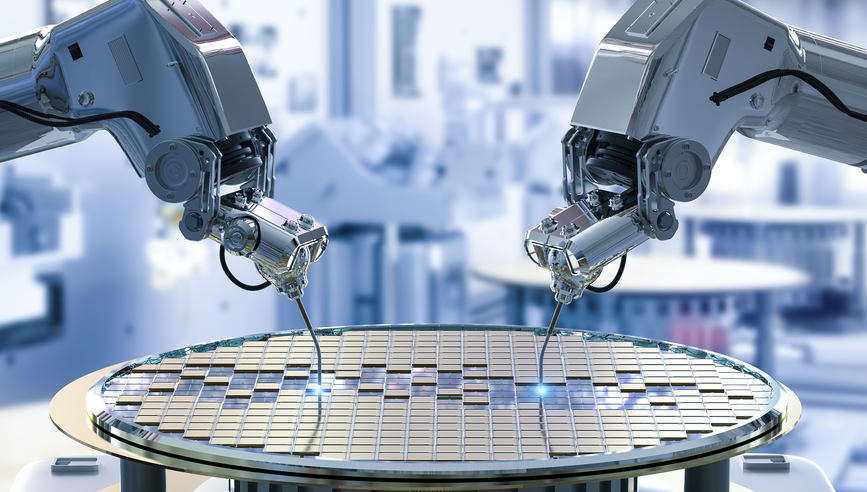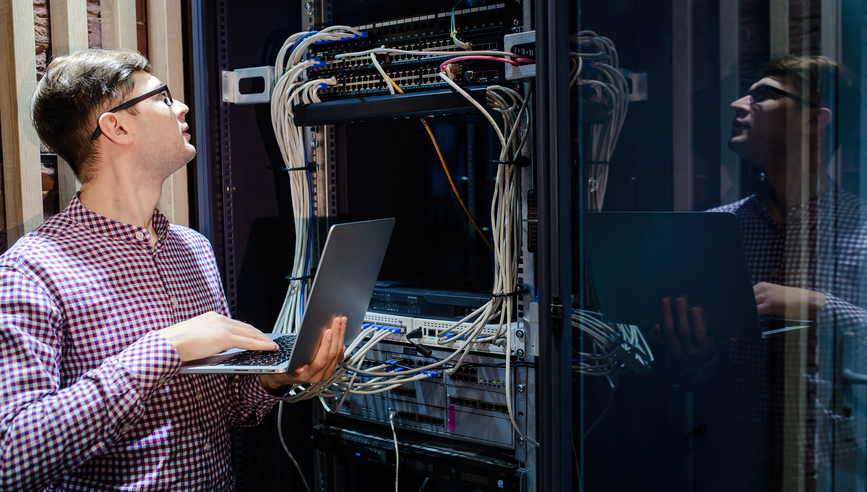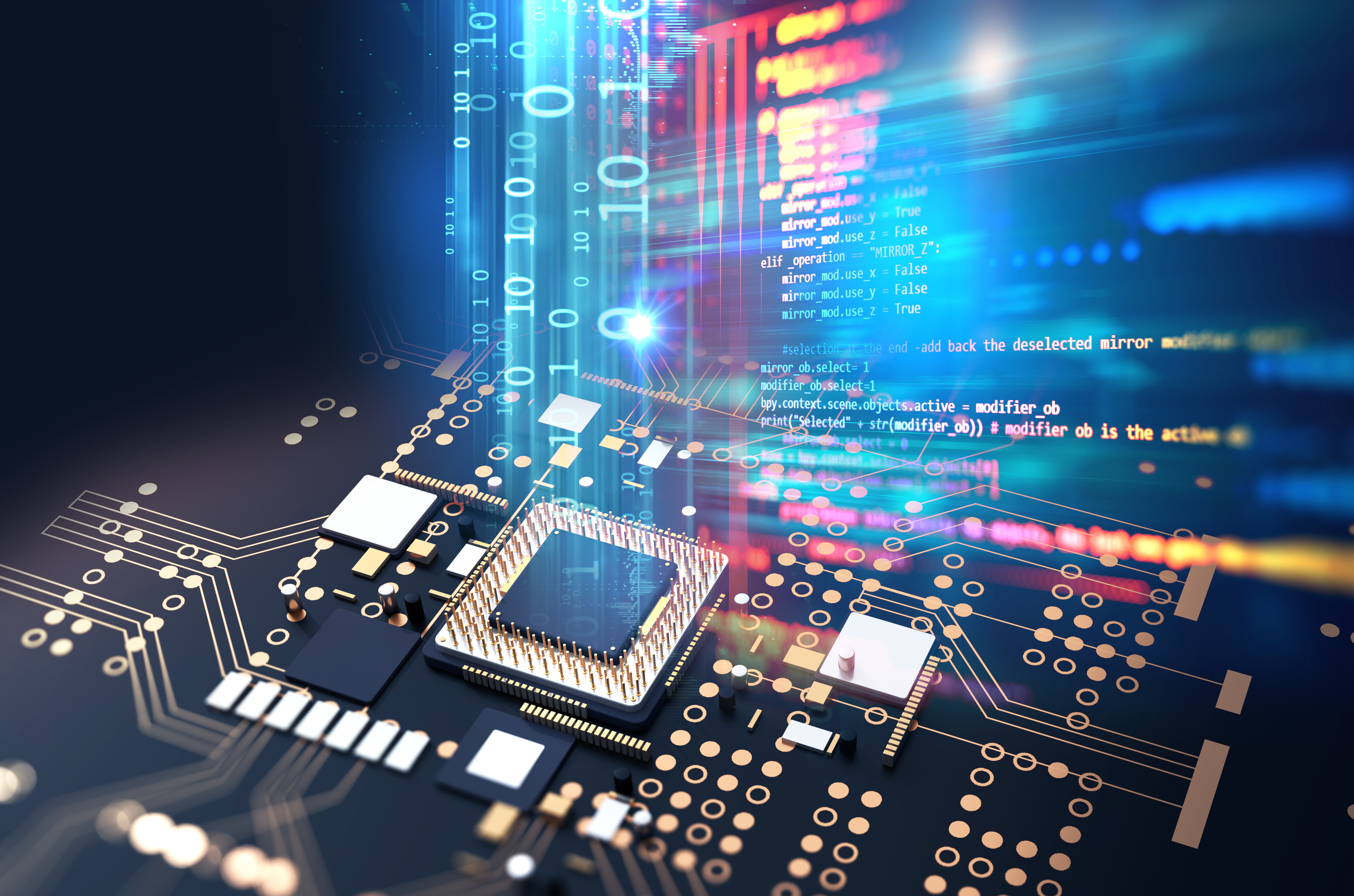Life Sciences Companies Face New Risks with Semiconductors

(MUSIC PLAYING)
(DESCRIPTION)
Travelers Logo
TEXT: Advancing Semiconductors: Life Sciences
EMPOWERING THE MIRACULOUS
EMPOWERING THE EXTRAORDINARY
EMPOWERING THE LIFESAVING
EMPOWERING THE AMAZING
EMPOWERING THE INNOVATIVE
EMPOWERING THE WORLD OF TOMORROW
(SPEECH)
JENNIFER: Groundbreaking advances in semiconductor technology are inspiring innovation in the life sciences.
(DESCRIPTION)
TEXT: Jennifer Ampulski, Life Sciences Industry Lead, Travelers
(SPEECH)
I'm Jennifer Ampulski, Travelers Life Sciences Industry Lead.
(DESCRIPTION)
TEXT: ADVANCES IN SEMICONDUCTOR TECHNOLOGY FUEL INNOVATION
(SPEECH)
Sophisticated chips power AI applications that help facilitate the discovery of new drugs. Semiconductor technology enables fitness trackers to measure our heart rates, sleep quality and exercise. Chips also make possible a range of medical devices and instruments. However, alongside these exciting possibilities, the geographic concentration of supply chains creates the threat of interruptions, posing risks to life sciences companies.
(DESCRIPTION)
TEXT: THE THREAT OF AN INTERRUPTION POSES A KEY RISK
(DESCRIPTION)
TEXT: New, unproven or substandard suppliers can cause issues
(SPEECH)
These interruptions could force companies to use new, unproven or substandard chip suppliers. For example, a company that makes an implantable electrical stimulation device runs a clinical trial involving thousands of patients across the U.S. and Europe. If these chips cause the company's device
(DESCRIPTION)
TEXT: Malfunctioning devices can cause injuries
(SPEECH)
to malfunction during the trial, patients could be injured. This could impact the company's reputation as these events make news, not to mention the crippling expenses of lawsuits and related issues.
(DESCRIPTION)
TEXT: Lawsuits and related issues can damage reputations and finances
(SPEECH)
Alternatively, consider a company that makes MRI machines. If these machines fail to image properly, they can cause hospitals to limit or shut down their operations, leading to legal ramifications.
(DESCRIPTION)
TEXT: EMPOWERING ADVANCEMENTS FOR 40+ YEARS
(SPEECH)
For more than 40 years, Travelers has been at the forefront of protecting life sciences companies, helping to manage these risks. We offer coverage for bodily injury from a clinical trial, along with the option for product recall and clinical trial medical expenses. You can also choose to add errors and omissions coverage. Our dedicated life sciences Claim professionals understand the challenges of product liability, contractual risk transfer and more. Travelers is a key part of empowering the breakthroughs of tomorrow.
(DESCRIPTION)
TEXT: INNOVATE FEARLESSLY. INSURE CONFIDENTLY.
(DESCRIPTION)
Travelers logo
TEXT: To learn more about how we're empowering the tech & life sciences industry, visit travelers.com/semiconductors
Travelers Indemnity Company and its property casualty affiliates. One Tower Square, Hartford, CT 06183.
This material does not amend, or otherwise affect, the provisions or coverages of any insurance policy or bond issued by Travelers. It is not a representation that coverage does or does not exist for any particular claim or loss under any such policy or bond. Coverage depends on the facts and circumstances involved in the claim or loss, all applicable policy or bond provisions, and any applicable law. Availability of coverage referenced in this document can depend on underwriting qualifications and state regulations.
© Copyright 2024 The Travelers Indemnity Company. All rights reserved. Travelers and the Travelers Umbrella logo are registered trademarks of The Travelers Indemnity Company in the U.S. and other countries.
The life sciences industry is experiencing a paradigm shift, driven by the evolving world of semiconductor technologies. Advanced chip technology is now embedded at every level of healthcare, transforming how patients are diagnosed, treated and monitored. Rapid advancements are revolutionizing healthcare and changing the risk landscape for medical device, pharma/biopharma and digital health companies.
"For risk managers in life sciences companies, recognizing the intricate relationship between semiconductors and medical advancements, understanding the associated risks and potential insurance solutions, is crucial," said Jennifer Ampulski, Life Sciences Lead for Travelers.
MEMS: Amazing benefits and a few watch-outs
Imagine a world where your health is constantly tracked by a discreet sensor on your wrist or chest. Semiconductor-based MEMS (microelectromechanical systems) make this a reality. These tiny sensors collect real-time data on everything from heart rate and blood pressure to sleep patterns and even emotional states. This continuous monitoring, especially in remote locations or resource-limited settings, enables early detection of health issues and timely interventions.1
“While semiconductor-led medical device innovations improve healthcare, they may also open the door to increased risks,” Ampulski noted, recommending that risk managers pay close attention to the potential for increased supply chain risk and data privacy risk.
Semiconductor supply chain dependency
Though the relationship between the semiconductor industry and life sciences sectors is interdependent, it is not equal. “Even a mild turbulence in the supply chain of chips can have an outsized impact on life sciences companies,” said Ampulski.
Medical device manufacturers rely on a discreet network of global chipmakers, which can leave them vulnerable in the event of supply chain disruptions. Tensions between China and Taiwan, where most advanced semiconductors are fabricated,2 are a persistent source of concern. Another concern comes from adverse weather patterns that threaten to disrupt the supply of raw materials and vital components.
Ampulski recommends that medical device manufacturers develop a predefined, well-documented and tested business continuity plan that clearly communicates how to respond during a disruptive event.
Data and privacy concerns
Ampulski also noted that wireless collection of continuously delivered patient data raises significant privacy and data security concerns. She suggests that Travelers’ five cyber readiness practices can help companies protect sensitive data and secure operations. These practices include:
- Add multifactor authentication (MFA).
- Update your systems.
- Implement endpoint detection and response (EDR).
- Have an incident response (IR) plan.
- Regularly back up your data.
Insurance can help life sciences companies adapt to new semiconductor risks
Life sciences companies that take a comprehensive approach to managing risk may have the best opportunity to overcome devastating threats to their businesses. This includes acquiring the right mix of insurance coverages to address the unique variety of exposures they face.
For example, MedFirst® from Travelers is designed to empower businesses with coverage that is both broad and flexible to help address the complexity of risks facing life sciences companies.
- Products/completed operations liability coverage helps cover costs of bodily injury and/or property damage arising from a company’s work, including for a clinical trial.
- Errors and omissions liability coverage helps cover costs that arise from a loss caused by a company’s product or service due to their error, omission or negligent act.
Learn more about Life Sciences Insurance from Travelers or reach out to a Travelers representative.
Source
1 https://semiengineering.com/knowledge_centers/integrated-circuit/ic-types/analog-circuits/mems/#:~:text=MEMS%20chips%20today%20are%20used,within%20minutes%20instead%20of%20hours
2https://worldpopulationreview.com/country-rankings/semiconductor-manufacturing-by-country


